2022 Lucid Air Tire Information

Understanding Tire Markings

Federal law requires tire manufacturers to place standardized information on the sidewall of all tires. This information identifies and describes the fundamental characteristics of the tire and also provides the tire identification number (TIN) for safety standard certification and in case of a recall.
- Tire category
P indicates that the tire is for passenger vehicles. HL indicates that the tire is a high-load rated tire.
NOTE: May not be shown on some tires. - Tire width
This three-digit number gives the width in millimeters of the tire from sidewall edge to sidewall edge. So, if a tire is marked P245/35R21, the tire width is 245 mm. - Aspect ratio
This two-digit number, also known as the profile, gives the sidewall height as a percentage of the tire width. So, if the tire width is 245 mm, and the aspect ratio is 35, the sidewall height will be 85.75 mm. - Tire construction
R indicates that the tire is of Radial ply construction. So, if a tire is marked P245/35R21, R is the Radial ply construction. - Wheel diameter
This two-digit number is the diameter of the wheel rim in inches. So, if a tire is marked P245/35R21, the wheel diameter is 21 inches. - Load index
This two- or three-digit number is the tire’s load index. It is a measurement of how much weight each tire can support. This number is not always shown. - Speed rating
The speed rating, when stated, denotes the maximum speed at which the tire should be used for extended periods. The ratings range from 99 mph (160 km/h) to 186 mph (300 km/h). These ratings are listed in the following table.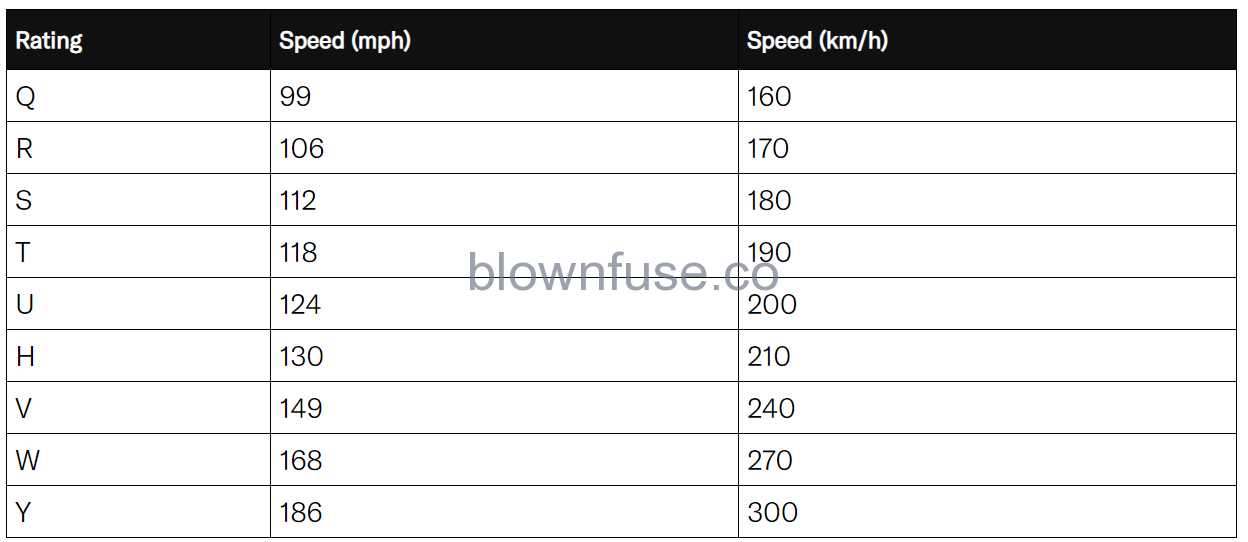
- U.S DOT Tire ldentification Number (TIN)
Regulations require that the TIN begins with the letters “DOT” and is followed by two numbers or letters that indicate where it was manufactured. The last four numbers represent the week and year the tire was built. For example, the number 1706 means the 17th week of 2006. The other numbers are marketing codes used at the manufacturer’s discretion. This information can be used to contact consumers if a tire defect requires a recall. - Maximum permissible inflation pressure
Maximum permissible inflation pressure means the maximum cold inflation pressure to which a tire may be inflated. It is okay for the tire pressure to exceed this value when it is warmed up, but it must be at or below this pressure when the tire is cold. - Treadwear grade
This number indicates the tire’s wear rate. See Uniform Tire Quality Grading. - Traction grade
This letter indicates a tire’s ability to stop on wet pavement. See Uniform Tire Quality Grading. - Temperature grade
This letter indicates a tire’s heat resistance grading. See Uniform Tire Quality Grading. - Tire composition and materials
The number of plies in both the tread area, and the sidewall area, indicates how many layers of rubber coated material make up the structure of the tire. Information is also provided on the type of materials used. - Maximum tire load
This is the maximum load that can be carried by the tire. - International tire approval marks
See International Tire APproval Marks.
International Tire Approval Marks
Before any tires can be sold in most countries, tire manufacturers must test and certify that all applicable safety and performance standards are met. This oan include, sidewall branding, durability, physical dimensions, high-speed endurance, road noise, and wet traction.
Many tires are sold globally, so tires may be branded with multiple approval codes from various countries.
United States
 United States Department of Transportation (DOT) See 8. U.S DOT tire identification number (TIN)
United States Department of Transportation (DOT) See 8. U.S DOT tire identification number (TIN)
China
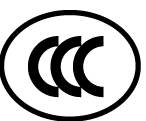 China Compulsory Certification (CCC) Mark China Compulsory Certification mark for products being exported to or sold in the Peoples Republic of China.
China Compulsory Certification (CCC) Mark China Compulsory Certification mark for products being exported to or sold in the Peoples Republic of China.
Europe
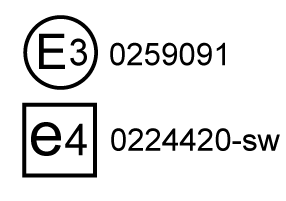 United Nations Economic Commission of Europe (U.N.E.C.E)
United Nations Economic Commission of Europe (U.N.E.C.E)
The symbol identifying the United Nations Economic Commission for Europe (U.N.E.C.E., sometimes referred to as E.C.E.) is found on a tire’s sidewall which certifies that the tire manufacturer meets all regulations, including the Iload index and speed symbol appearing in its service description.
The letter “E” or “e” and number code (in a circle or rectangle) identifies the country where the tire was originally registered, followed by two digits (the Regulation Series) where the tire was approved (such as “02” for E.C.E. Regulation 30 governing passenger tires) followed by digits representing the E.C.E. mark, type-approval numbers.
Tested tires meeting the “pass-by” noise and wet traction Iimits may have another E.C.E. branding followed by an “-s” and “w” (for sound and wet traction, respectively). One or two E.C.E. svmbols mav appear on the tirels sidewall.
Uniform Tire Quality Grading
The following information relates to the tire grading system developed by the National Highway Traffic Safety Administration (NHTSA), which will grade tires by tread wear, traction and temperature performance.
NOTE: Tires that have deep tread, and winter tires, are exempt from these marking requirements.
Quality grades, where applicable, can be found on the tire sidewall between the tread shoulder and maximum section width. For example:

In addition to the marking requirements, passenger car tires must conform to Federal Safety
Requirements.
Treadwear
The treadwear grade is a comparative rating based on the wear rate of the tire when tested under controlled conditions on a specified government test course.
For example, a tire graded 150 would wear one and a half times as well on a government test course as a tire graded 100. The relative performance of tires depends on the actual conditions of their use, however, and may depart significantly from the norm due to variations in driving habits, service practices, and differences in both road characteristics and climate.
Traction
NOTE: The traction grade assigned to this tire is based on straight-ahead braking tests, and does not include acceleration, cornering, hydroplaning, or peak traction characteristics.
The traction grades, from highest to lowest, are: AA, A, B, and C. These grades represent a tire’s ability to stop on a wet pavement as measured under controlled conditions on specified government test surfaces of asphalt and concrete. A tire marked C may have poor traction performance.
Temperature
WARNING: The temperature grade for this tire is established for a tire that is properly inflated and not overloaded. Excessive speed, under-inflation, or excessive loading, either separately or in combination, can cause heat build-up and possible tire failure.
The temperature grades are A (the highest), B, and C, representing the tire’s resistance to the generation of heat and its ability to dissipate heat when tested under controlled conditions on a specified indoor laboratory test wheel.
Sustained high temperature can cause the material of the tire to degenerate and reduce tire life, and excessive temperature can lead to sudden tire failure.
The grade C corresponds to a level of performance that all passenger car tires must meet under the Federal Motor Safety Standard No. 109.
Grades B and A represent higher levels of performance on the laboratory test wheel than the minimum required by law.
Tire and Loading Information Label
Open the left front door to locate the tire information label on the driver’s side center pillar.
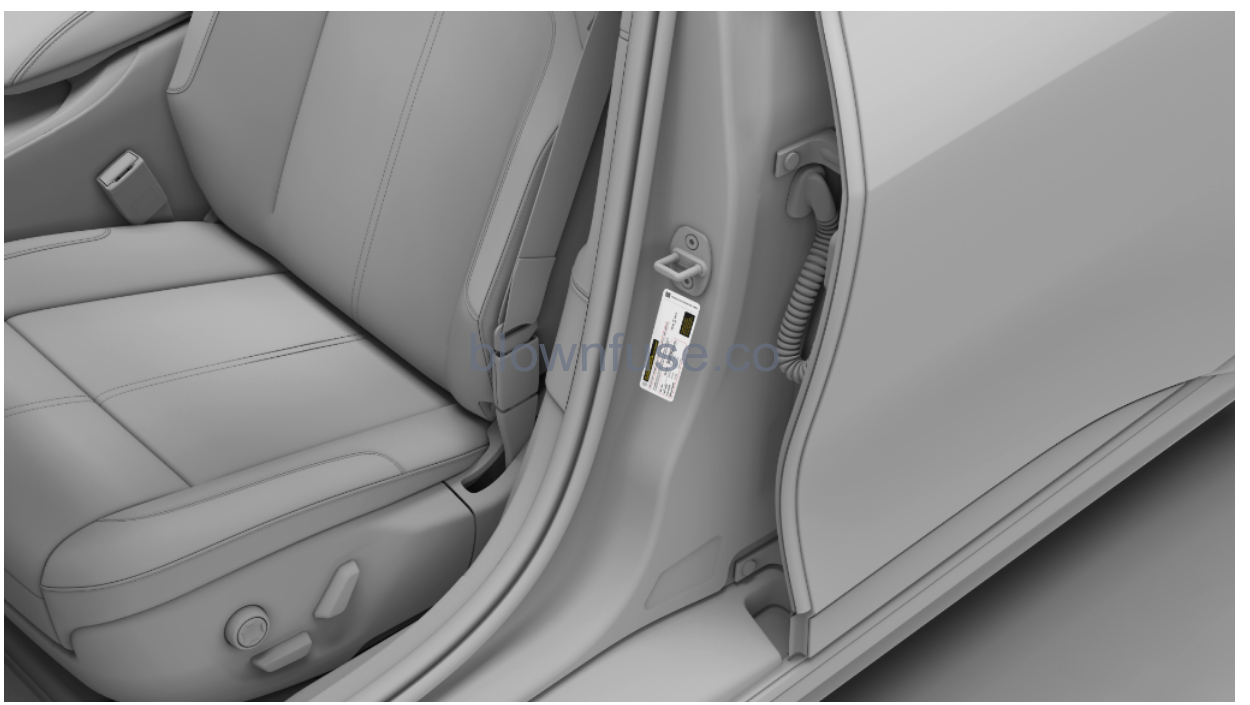
The label contains the following information:
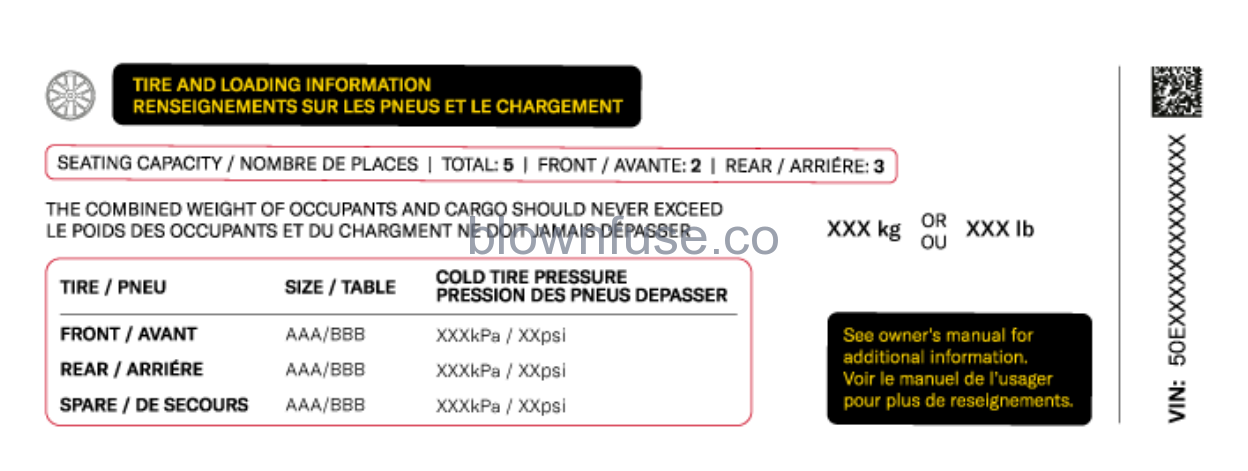
- The maximum vehicle capacity weight in kilograms (kg) and pounds (lb).
- Maximum number of occupant seating positions in the vehicle.
- The size of the tires originally fitted to the vehicle.
- The cold inflation pressures for the original specification of front and rear tires.
The stated tire pressures provide the optimum vehicle ride and handling characteristics for all normal operating conditions.
NOTE: Do not change this label. even if you use different tires in the future

